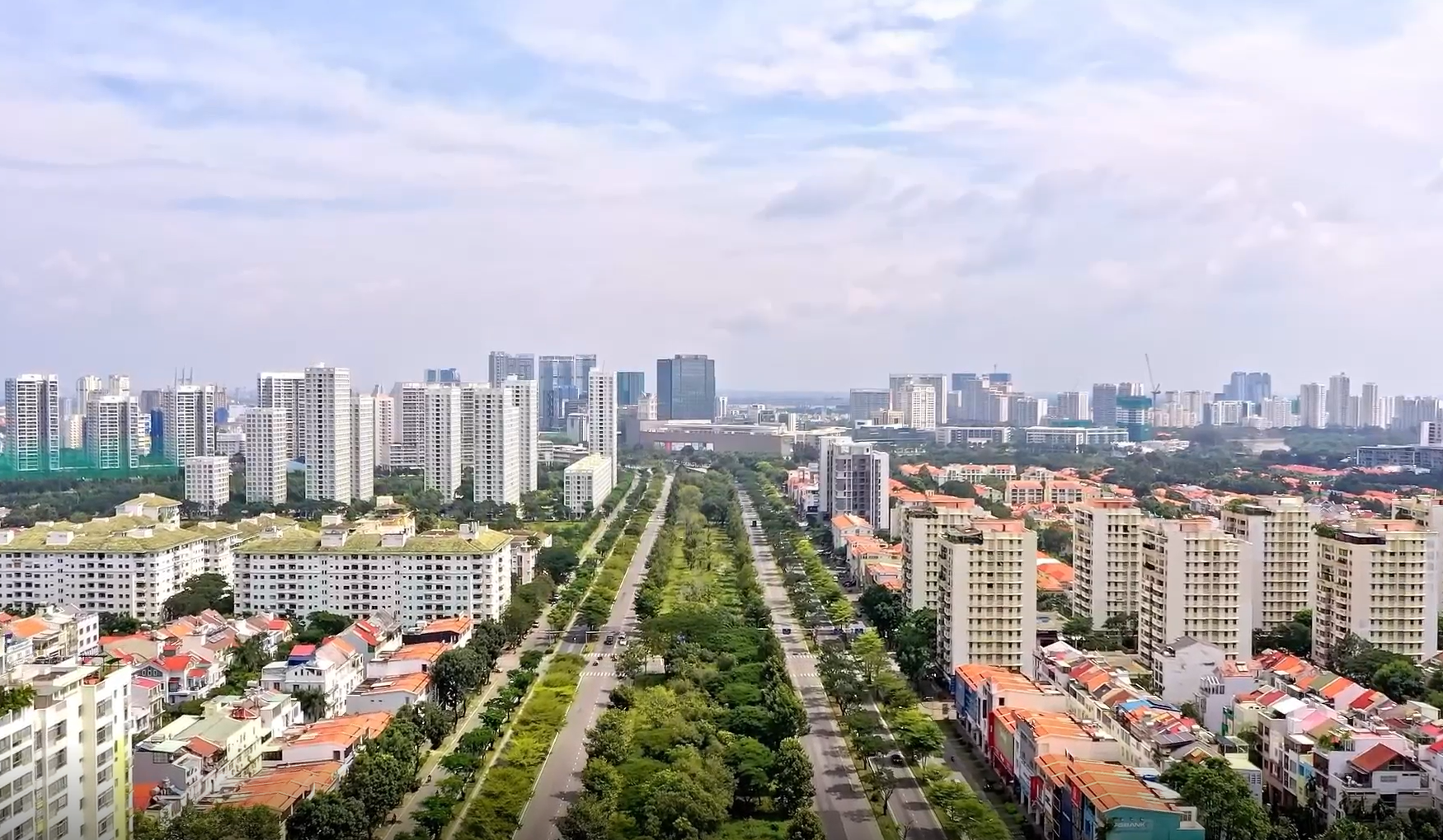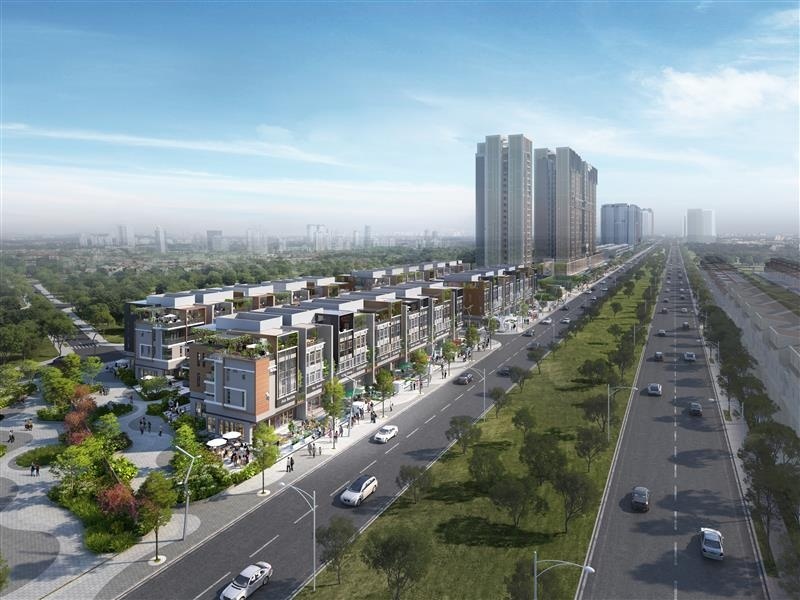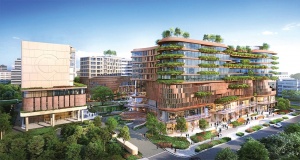Among these, the Eastern area centred around the former Thu Duc city has taken the lead thanks to its well-developed infrastructure such as the Hanoi Highway, Long Thanh-Dau Giay Expressway, Metro Line 1, and high-tech industrial zones. The rapid growth of the East is now paving the way for other regions to transform, with the Southern area increasingly asserting its role as the city’s next growth engine.
Once underserved in infrastructure investment, the Southern corridor is now accelerating thanks to a series of strategic projects. Interregional transport infrastructure has become a key driver, attracting investment flows and enabling the formation of modern urban zones, gradually turning the South into a new highlight on Ho Chi Minh City’s development map.
 |
| Southern Ho Chi Minh City, a snapshot of infrastructure development. Photo: Keppel |
The 76-km Ring Road 3 expected to be completed by Q2/2026, and will directly connect southern Ho Chi Minh City with Dong Nai, Binh Duong, and Long An provinces, unlocking major opportunities for trade, industry, and logistics.
Meanwhile, Ben Luc – Long Thanh Expressway, acting as a “bridge” between the south and east, is being fast-tracked for completion between 2025 and 2026. Once operational, it will significantly reduce travel time from Nha Be and Binh Chanh districts to Dong Nai and Ba Ria–Vung Tau.
Another key highlight is Metro Line 4 (Thoi An–Hiep Phuoc communes), which is planned to pass through major roads such as Pasteur, Ben Thanh, Nguyen Thai Hoc, Ton Dan, and Nguyen Huu Tho, connecting the southern area with central Ho Chi Minh City and Northern districts. The project is currently in the pre-investment phase, with implementation expected post-2025.
Additionally, the Southern region’s proximity to Long An and Tien Giang provinces offers strong advantages for regional economic integration. The development of Hiep Phuoc Port, Long Hau Industrial Park, and surrounding export processing zones is turning the area into an attractive destination for investors in light industry, logistics, and real estate.
In the master plan for southern Ho Chi Minh City, Nguyen Huu Tho boulevard plays a central role, linking Tan Thuan, Phu Thuan, Tan My and Tan Hung wards (former District 7) with Nha Be district. The expansion of the road to 6-8 lanes, along with connections to major arteries like Nguyen Van Linh, Road 15B, and Metro Line 4, is gradually completing the inter-regional transport network, positioning Nguyen Huu Tho as the “Hanoi Highway” of the south.
Beyond its strategic transport function, Nguyen Huu Tho Boulevard has become one of the most dynamic real estate corridors in the region.
Along the boulevard, a series of large-scale developments such as Celesta City, GS Metrocity, Zeitgeist, Dragon City, and high-end residential zones extending from Phu My Hung New Urban Area are taking shape, forming a vibrant ecosystem for living, working, and leisure.
 |
| Perspective view of Celesta Avenue facing Nguyen Huu Tho boulevard. Photo: Keppel |
Among these developments, Celesta Avenue stands out as a premium shophouse project jointly developed by Keppel (Singapore) and Phu Long Real Estate JSC. Located directly on Nguyen Huu Tho boulevard, Celesta Avenue enjoys dual advantages: seamless connectivity to key infrastructure such as Ring Road 3, Ben Luc-Long Thanh Expressway, and Metro Line 4, as well as proximity to a densely populated area with thriving commercial activity.
Featuring 43 dual-frontage shophouses, Celesta Avenue is designed to optimise both residential and business functions, catering to the diverse needs of modern urban dwellers. With its strategic location, multidimensional connectivity, and value appreciation potential driven by ongoing infrastructure upgrades, Celesta Avenue is not only an ideal place to live but also a compelling a long-term investment opportunity.
The project also reflects a broader trend: the shift of real estate capital flows towards southern Ho Chi Minh City, which is steadily transforming into the city’s next urban growth pole.
 |
Keppel: investing in Vietnam’s sustainable development
As Vietnam continues its economic advancement, Keppel has been a steady contributor to its growth journey over the past three decades. Joseph Low, chief representative (Vietnam) and president (Vietnam) of Real Estate at Keppel Ltd., talked to VIR’s Ngoc Anh about how the Singaporean firm is contributing to Vietnam’s growth through bold sustainability strategies and a deep commitment to excellence. |
 |
Hanoi Centre: a multi-experiential retail landmark
More than a shopping destination, Hanoi Centre is envisioned as an integrated experiential hub, where modern amenities converge with the cultural richness of urban life. |
 |
Keppel receives investment registration certificate for Saigon Centre Phase 3
The Real Estate Division of Keppel received the investment registration certificate for Phase 3 of Saigon Centre, the company’s flagship mixed-use development in Vietnam at the Vietnam-Singapore Connectivity Ministerial Meeting held in Hanoi on October 10. |




